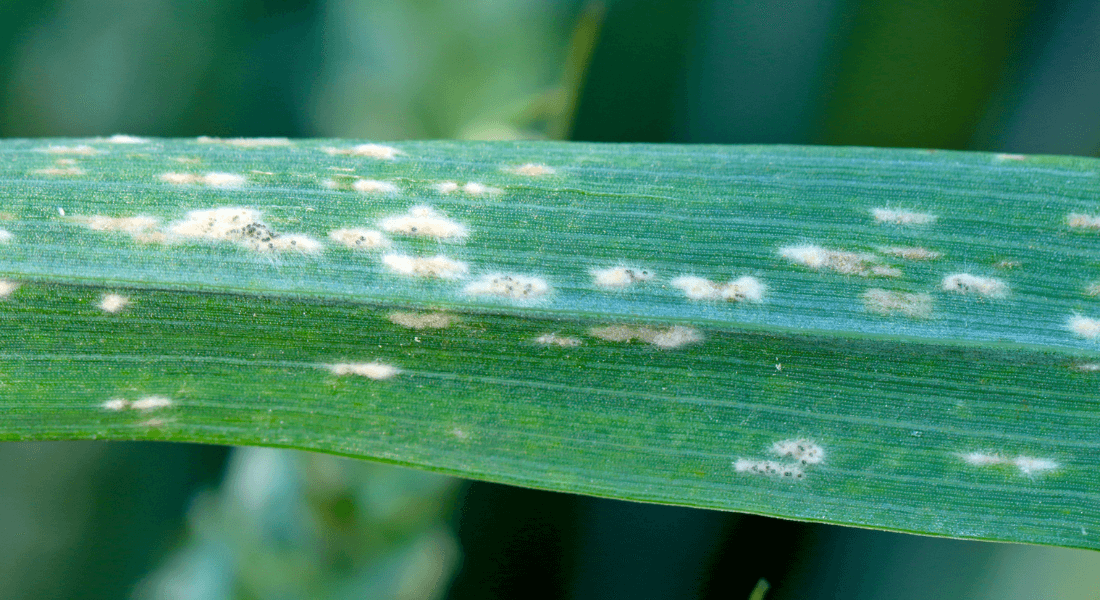PhD defence Ole Reppien Christensen

Insights from IMM1 and VAP Proteins. Novel susceptibility and Resistance Mechanisms in Plant-Powdery Mildew Interactions
Summary
Plant pathogens pose a significant threat to agriculture, causing substantial yield losses. These losses not only impact global economies but also contribute to food scarcity, famine, and hunger in a growing population. At the same time, an increased focus on restricting pesticide use due to health and environmental concerns are limiting farmers' options for effective disease control. Meanwhile, climate change and global warming continuously create new regions with conditions favourable for plant pathogens, expanding the range of disease spread. Thus, there is an urgent need for stable and durable plant resistances. Developing sustainable and long-lasting resistance in crops requires a deep understanding of plant-pathogen interactions and the identification of key susceptibility factors that can be targeted for resistance breeding.
To address these challenges, this thesis investigates key susceptibility factors involved in plant-powdery mildew interactions. Powdery mildew fungi, such as Blumeria hordei (Bh) in barley (Hordeum vulgare) and Golovinomyces orontii (Go) in Arabidopsis thaliana, are obligate biotrophic pathogens that depend on living host cells for survival. Understanding the molecular mechanisms that facilitate their infection and life cycle completion is crucial for developing durable resistance in crops.
In barley, Vesicle-Associated Membrane Protein (VAMP)-Associated Proteins (VAPs) have been investigated for their potential role in pathogen accommodation. VAPs are known to facilitate lipid transfer by mediating Membrane Contact Sites (MCSs) between the Endoplasmic Reticulum (ER) and target organelles. In this context, they are suspected to contribute to the formation of the Extra-Haustorial Membrane (EHM) through lipid transfer. This study challenges the conventional perception that EHM formation is driven by plasma membrane invagination. Instead, it suggests that lipid transfer plays a major role in lipid accumulation within the EHM, providing an alternative perspective on EHM formation.
Prior to this study, a novel susceptibility factor, IMMUNE1A (IMM1A) was identified in a genetic screen performed in Arabidopsis thaliana eds1 mutants (Xie, Li and Thordal-Christensen, unpublished results). Mutants lacking AtIMM1A exhibited resistance to Go, suggesting that it is a novel susceptibility factor. In this study, imm1-mediated resistance was further characterised, revealing that AtIMM1A contributes to both pre- and post-invasive immunity. While the underlying molecular mechanisms, of imm1-mediated resistance remain to be fully elucidated, we found intriguing similarities to that of mlo-mediated resistance.
Furthermore, this study provides evidence that a Hvimm1A Hvimm1B double knockout in barley confers resistance to powdery mildew. A successful CRISPR/Cas9-mediated generation of this double mutant confirmed its ability to confer resistance, highlighting a potential cross-species conservation of IMM1 function.
By shedding light on the molecular processes underlying powdery mildew susceptibility, this thesis contributes to a deeper understanding of plant-pathogen interactions. Identifying and functionally characterizing susceptibility factors like VAPs and IMM1 opens new avenues for resistance breeding, offering potential strategies to develop crops with durable, genetically encoded immunity against fungal pathogens. Overall, this work enhances our knowledge of susceptibility factors in plant immunity, paving the way for novel strategies to improve disease resistance in cereal crops.
Assessment Committee
- Professor David B. Collinge, PLEN, University of Copenhagen, Denmark
- Professor Pietro D. Spanu, Imperial College, London, UK
- Professor Bai Yuling, Wageningen University, The Netherlands
Supervisors
Professor Hans Thordal-Christensen, PLEN. University of Copenhagen, Denmark
Time & venue
Friday 25th April at 13:00
Auditorium A70.03, Thorvaldsensvej 40, Frederiksberg
The defence is followed by a reception in meeting room R322/23 on 3rd floor.
Everybody is welcome.
Ask for a copy of the thesis: htc@plen.ku.dk
